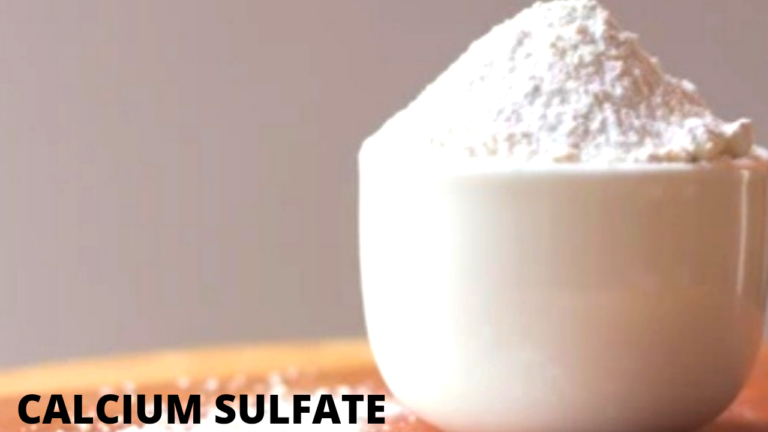Food & Beverages
Effluent is the water or gas that is discharged to a natural body of water from a structure such as a sewage treatment plant, sewer pipe, industrial wastewater treatment plant, or an industrial outfall. In engineering, effluent is the stream that emerges from a chemical reactor.
According to the United States Environmental Protection Agency, effluent is “wastewater, whether treated or not, that drains from a treatment facility, a sewer, or an industrial outfall.” Generally, it refers to waste dumped into surface water. Effluent is described in the Compact Oxford English Dictionary as “liquid waste or sewage released into a river or the sea.”
The outflow from a sewage treatment facility or the industrial wastewater discharge from industrial facilities are examples of effluent in the artificial sense, which is generally thought of as water pollution. For example, an effluent sump pump moves waste from toilets positioned below the main sewage system.Secondary effluent or treated effluent are terms used to describe treated effluent in the context of waste water treatment plants.
A biofilter’s microorganisms are fed with this cleaner effluent after that.The output of the cooling system at a thermal power plant, which is noticeably warmer than the surrounding air, is known as effluent cooling water. A discharge of liquid is all that is meant by effluent.
Effluent from the processing of sugar beets is frequently disposed of in water tanks that permit the mud-contaminated water to settle. The water at the top, which is pure and can be pumped back into the river or utilised once more in the process, is free from the muck as it drops to the bottom. Due to the humus content, the mud is frequently returned to the original fields.
Treatment effluent that complies with established requirements may be dumped into a stream, the sea, or a still body of water. The treated waste water may still contain coliforms before being disposed of into the body of water.
Organic, chemical, and microbiological issues are brought on by waste disposal in rivers. Organic pollution causes fish kills by lowering the oxygen level in rivers, but it also promotes rapid algae development downstream. In order to regulate the waste water discharge into the river so that it does not exceed its capacity to absorb waste, choices include waste water treatment, waste water reduction, alternative waste disposal places and methods, and increasing the quantity.
Even the application of cleaned effluent to land must be done with some care because there are still certain risks involved. A good sewage farm should be operated according to scientific principles and under effective supervision with the main goal of disposing of sewage along with its utilisation to the extent of disposal in a sanitary manner without polluting the soil, open water courses, or artesian waters, or contaminating crops raised on the sewage farm, or reducing the productivity of soil. It is also acceptable to use the effluent from properly constructed waste stabilisation ponds on land. Application of raw sewage to sewage farms should never be approved under any circumstances.
The Water Agency sells treated sewage water to industry.
Managing wastewater effectively involves these five steps:
1.describe every effluent made on the premises;
2. implement a waste reduction programme to reduce the amount and strength of effluent;
3.If necessary, incorporate in-process conditioning and treatment;
4.in order to customise treatment choices, decide on and establish segregation facilities;
5.ETP efficiency optimization.
Initial Treatment
Screening
Coarse Screens are composed of bars with 7.5 to 15 cm openings.
Bar screens are constructed of bars with 5 to 10 cm openings.
Screens remove 3 to 180 cu m/c of materials for every million cu m of sewage screened.
Removal of grit
30 cm/sec is the speed in grit channels.Removed grit particles ranged in size from 2.30 to 2.65 grains of sp.gr., or 0.15 to 0.20 mm. grit removal rate: 6 to 72 cu m/c of treated sewage.
Initial Therapy:
sewage that has been simply settled to eliminate as much organic matter as possible.
Typical efficiencies: 50% removal of suspended particles and 30% reduction of COD. II. Secondary Treatment
Activated sludge units, trickling filters, intermittent sand filters, or completely remove any organic material completely.
Cheap Treatment:
a) Waste stabilisation ponds (facultative, facultative, and anaerobic)
b) Lagoons that are aerated
c) Oxidation ditch design elements
Screens
Speed through screens.
0.30 m/sec for hands (at an average rate of flow)
0.75 m/sec (maximum velocity during rainy weather periods) for screens that have been mechanically cleaned.200–300% of the cross sectional area of the surface of the screen that is submerged, including bars and openings, the approach sewer.
1) Net submerged screen area: 0.04 to 0.06 square metres per day
2) Head loss of up to 0.75 metres through the screens
3) Floor drop beneath the display:
a) 75 mm for mechanically operated screens (minimum)
b) 150 mm (minimum) for manually operated screens
4) Screen top: 300 millimetres (min) above maximum flow level
5) A free board of at least 300 mm is required.
Grit Chambers
0.15 to 0.30 m/sec for the flow’s horizontal speed, 60 second waiting period (for 3 DWF). 40 m3/m2/hour for surface loading, 12 to 27 cum/million cubes are collected as grit.
Tanks for settling (plain sedimentation)
Two to five hours of detention.
For presettled sewage (after the removal of screen and grit): 1.0) After settling, the primary therapy is finished:
Dosing tanks
There is sufficient flow to submerge one filter unit to a depth of 5 to 10 cm.
One or two dosages per day should be given to each filter bed. 30 litres per second for 500 m2 is the average dose rate.
(with sporadic doses and resting sand beds)
6.) Low rate trickling filters high rate hydraulic loading (measured in million liters/hectare/meter/day) first.
7) Activated Sludge Units
Design parameters for the capacities and allowed loadings of activated sludge aeration tanks Contact stability in process plant design.
The detention duration in the contact zone accounts for 30-35 percent of the overall aeration capacity.
The remaining aeration capacity is made up of the re-aeration zone.
8) Design criteria for Activated Sludge Plants’ Secondary or Final Settling Tanks



EFFLUENT MANAGEMENT AND UTILISATION